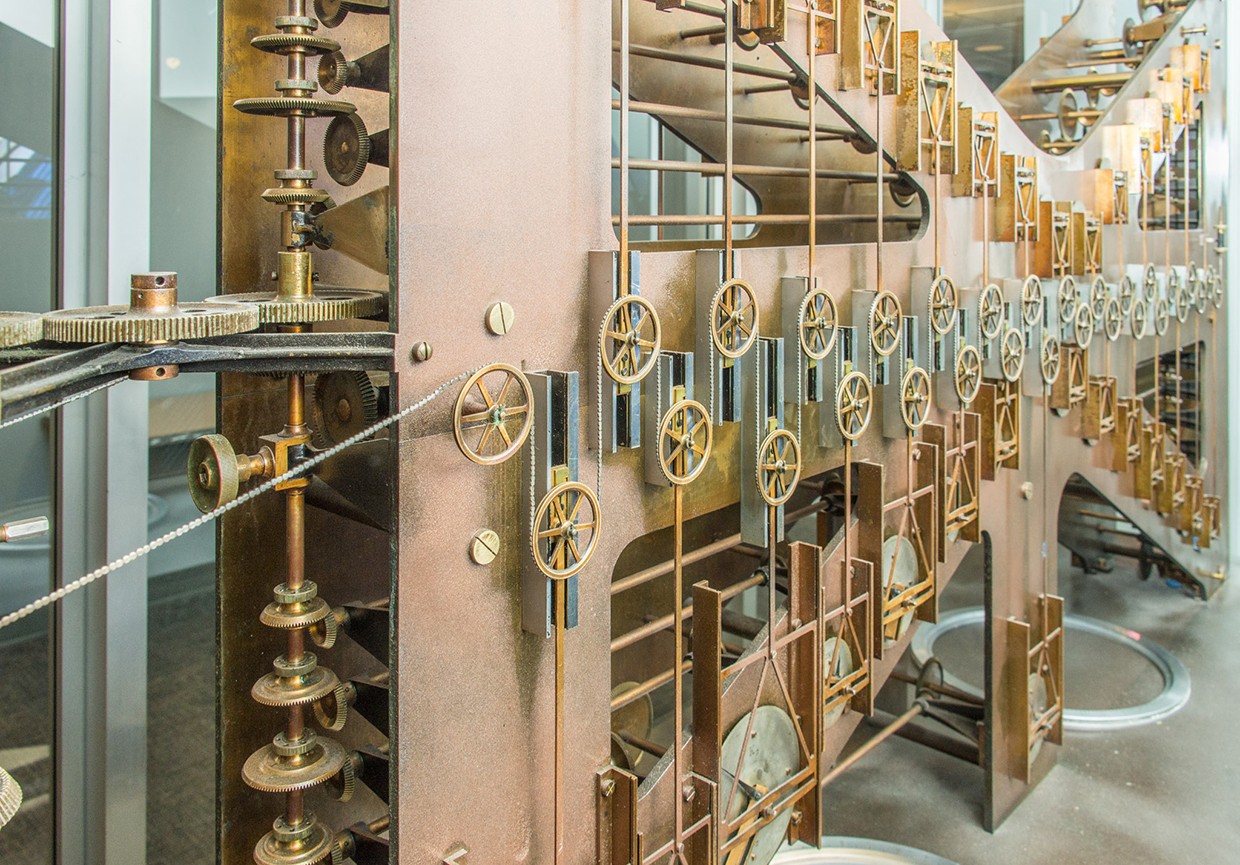Not Your Father’s Analog Computer by Professor Yannis Tsividis

Time and Tide: This mechanical analog computer was used for predicting tides. Known as “Old Brass Brains” (or more formally, Tide-Predicting Machine No. 2), it served the U.S. Coast and Geodetic Survey in the calculation of tide tables beginning in 1912 and was not retired until 1965, when it was replaced with an electronic computer.
When Neil Armstrong and Buzz Aldrin landed on the moon in 1969 as part of the Apollo 11 mission, it was perhaps the greatest achievement in the history of engineering. Many people don’t realize, though, that an important ingredient in the success of the Apollo missions and their predecessors were analog and hybrid (analog-digital) computers, which NASA used for simulations and in some cases even flight control. Indeed, many people today have never even heard of analog computers, believing that a computer is, by definition, a digital device.
If analog and hybrid computers were so valuable half a century ago, why did they disappear, leaving almost no trace? The reasons had to do with the limitations of 1970s technology: Essentially, they were too hard to design, build, operate, and maintain. But analog computers and digital-analog hybrids built with today’s technology wouldn’t suffer the same shortcomings, which is why significant work is now going on in analog computing in the context of machine learning, machine intelligence, and biomimetic circuits.
Here, I will focus on a different application of analog and hybrid computers: efficient scientific computation. I believe that modern analog computers can complement their digital counterparts in solving equations relevant to biology, fluid dynamics, weather prediction, quantum chemistry, plasma physics, and many other scientific fields. Here’s how these unconventional computers could do that.
An analog computer is a physical system configured so that it is governed by equations identical to the ones you want to solve. You impose initial conditions corresponding to those in the system you want to investigate and then allow the variables in the analog computer to evolve with time. This result provides the solution to the relevant equations.
To take a ludicrously simple example, you could consider a hose and a bucket as an analog computer, one that performs the integration function of calculus. Adjust the rate of water flowing in the hose to match the function you want to integrate. Direct the flow into the bucket. The solution to the mathematical problem at hand is just the amount of water in the bucket.
Although some actually did use flowing fluids, most early analog computers were mechanical contraptions containing rotating wheels and gears. These include Vannevar Bush’s differential analyzer in 1931, constructed on principles that go back to the 19th century, chiefly to the work of William Thomson (who later became Lord Kelvin) and his brother James, who designed mechanical analog computers for calculating tides. Analog computers of this sort remained in use for a long time for such purposes as controlling the big guns on battleships. By the 1940s, electronic analog computers took off too, although the mechanical variety continued in use for some time. And none other than Claude Shannon, the father of formal digital design theory, published a seminal theoretical treatment of analog computing in 1941.
Starting at about that time, electronic analog computers were extensively developed in the United States, the Soviet Union, Germany, the United Kingdom, Japan, and elsewhere. Many manufacturers, including Electronic Associates Inc., Applied Dynamics, RCA, Solartron, Telefunken, and Boeing, produced them. They initially were used in missile and airplane design and in flight simulators. Naturally enough, NASA was a major customer. But applications soon extended to other areas, including nuclear-reactor control.